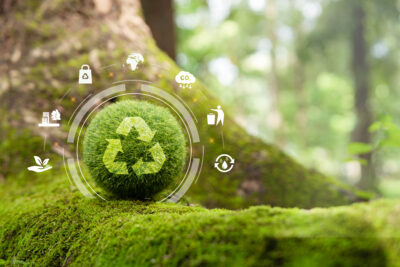Article Contents
Introduction
The plastics industry is transforming significantly in an era where environmental consciousness is not just a trend but a necessity. Developing sustainable and biodegradable plastics is not just a scientific advancement; it’s a pivotal step towards a greener future. This article delves into the world of these eco-friendly alternatives, exploring their benefits, challenges, and potential for a sustainable future.
The Need for Sustainable Plastics
Plastic pollution is a global crisis, with millions of tons of plastic waste in landfills and oceans annually. Traditional plastics, derived from fossil fuels, take hundreds of years to decompose, posing severe threats to wildlife and ecosystems. The urgent need to address this issue has propelled the development of sustainable and biodegradable plastics.
What are Sustainable and Biodegradable Plastics?
Renewable resources like cornstarch, sugarcane, or cellulose make sustainable plastics, which reduce the carbon footprint associated with plastic production. Conversely, biodegradable plastics break down more quickly and efficiently under certain conditions, thus minimising environmental impact.
Environmental Benefits
Sustainable and biodegradable plastics primarily benefit the environment by reducing their impact. They decompose faster, thereby reducing landfill waste and ocean pollution. Additionally, their frequent production from biomass contributes to a lower carbon footprint than traditional plastics.
Challenges and Limitations
Despite their benefits, sustainable and biodegradable plastics face several challenges. One major issue is cost-effectiveness; these materials are often more expensive to produce than conventional plastics. Additionally, there are concerns about the biodegradation efficiency and the specific conditions required for these materials to decompose properly.
Innovations and Advances
The field of sustainable plastics is ripe with innovation. Researchers are constantly exploring new materials and methods to improve the efficiency and reduce the cost of these eco-friendly alternatives. Recent advances include enhanced biodegradation techniques and the development of composites that combine biodegradable materials with traditional plastics for better performance.
Understanding Different Plastic Types: Engineering Styrenics vs. Low Molecular Polymers
In the context of sustainable and biodegradable plastics, it’s important to distinguish between different types of plastics, such as engineering styrenics and low molecular polymers like polypropylene. Engineering styrenics, which include materials like polystyrene and ABS (Acrylonitrile Butadiene Styrene), are known for their strength, durability, and heat resistance.
These properties make them ideal for demanding automotive parts, electronics, and construction applications. On the other hand, low molecular polymers such as polypropylene are characterized by their flexibility, chemical resistance, and lower density. Polypropylene is widely used in packaging, textiles, and consumer goods. While both types of plastics have unique advantages, the focus on sustainability pushes for advancements in biodegradable and eco-friendly versions of these materials. Innovations in making engineering styrenics and polypropylene more sustainable and biodegradable are crucial in reducing the environmental footprint of plastics and contributing to a more circular economy in the industry.
The Future of Plastics
The future looks promising for sustainable and biodegradable plastics, thanks to technological advancements and growing consumer awareness. Furthermore, emphasising a circular economy that stresses reusing and recycling materials will play a vital role in adopting sustainable plastics.
Conclusion
Developing sustainable and biodegradable plastics marks a critical step in our journey towards an environmentally responsible future. While challenges remain, the continued innovation and growing awareness provide a hopeful outlook. Embracing these eco-friendly alternatives is not just a choice but a necessity for a sustainable world.




